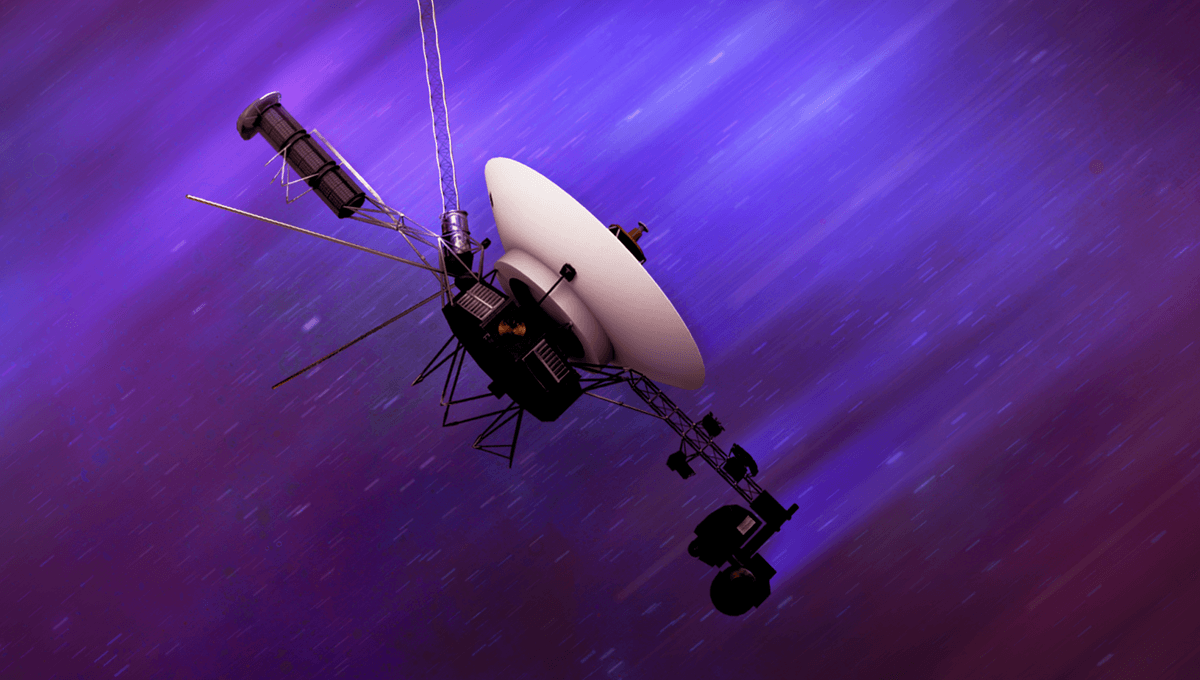
NASA engineers have just performed an incredible feat. Voyager 1 is now almost 25 billion kilometers (15 billion miles) from Earth, but the mission team was able to fix the spacecraft’s thrusters even though they have not worked since 2004. They managed to do it before the antenna we communicate with it and its twin, Voyager 2, goes offline for months of upgrades.
Since September 5, 1977, Voyager 1 has been roaming through the cosmos. Having completed its primary mission of gas giant observations, it has traveled farther than any other spacecraft before or since. Many of its original components have been switched off now, though. Some because they are no longer necessary (like the camera and its iconic last picture), while others have stopped working.
Thrusters are very important to keep the spacecraft antenna pointing at Earth. The ones that have been revived are backup roll thrusters, as the current active thrusters could stop working this fall due to the buildup of residue. Originally, to avoid buildup formation in the tubes, the mission team would fire up all of them once in a while, but back in 2004, the main rolling thrusters had an issue. Two small internal heaters lost power. The problem was considered unfixable.
“I think at that time, the team was OK with accepting that the primary roll thrusters didn’t work, because they had a perfectly good backup,” Kareem Badaruddin, Voyager mission manager at JPL, which manages the mission for NASA, said in a statement. “And, frankly, they probably didn’t think the Voyagers were going to keep going for another 20 years.”
With the communication pause looming (a nerve-wracking but necessary process) from May 4 this year to February 2026 due to upgrades to Deep Space Station 43, NASA wanted to make sure that they had all contingencies planned for. The Deep Space Station 43 is an antenna 70 meters (230 feet) across located in Canberra, Australia, that is part of NASA’s Deep Space Network. It’s the most powerful of the DSN and the only one that can communicate with the Voyager probes now that they are in interstellar space.
The upcoming pause led the team to reexamine the main thruster issue. They believed that a disturbance in a circuit might have “flipped a switch” in the system. If they could flip it again with a command, there was a chance they’d work again.
The procedure was not without risk. The team had to turn on the dormant main thrusters and then try to fix the heater issue. If by any chance, the automatic system measures a drift and fires the thruster before the heating, it would have caused an explosion. So the team had to place the star tracker that measures the position of the craft pointed as precisely as possible.
This is a difficult job here on Earth, let alone somewhere it takes over 23 hours to send a signal to. Still, the team executed the maneuver and tried to switch the heaters again, and it worked. The main thrusters worked again.
“It was such a glorious moment. Team morale was very high that day,” said Todd Barber, the mission’s propulsion lead at JPL. “These thrusters were considered dead. And that was a legitimate conclusion. It’s just that one of our engineers had this insight that maybe there was this other possible cause and it was fixable. It was yet another miracle save for Voyager.”
Source Link: After 21 Years, Voyager 1 Fires Its Thrusters Again Thanks To Long-Distance Servicing